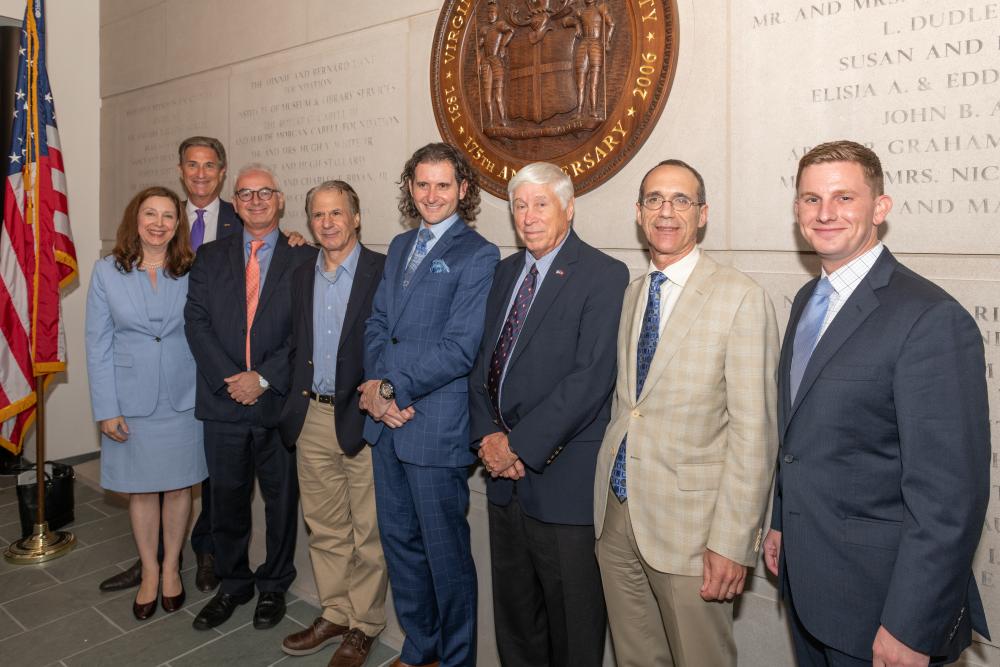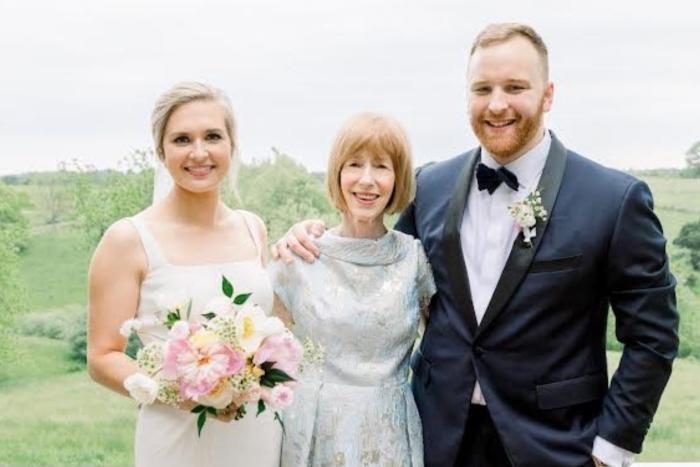
Photo by Troy Wilkinson, courtesy of Virginia Museum of History and Culture
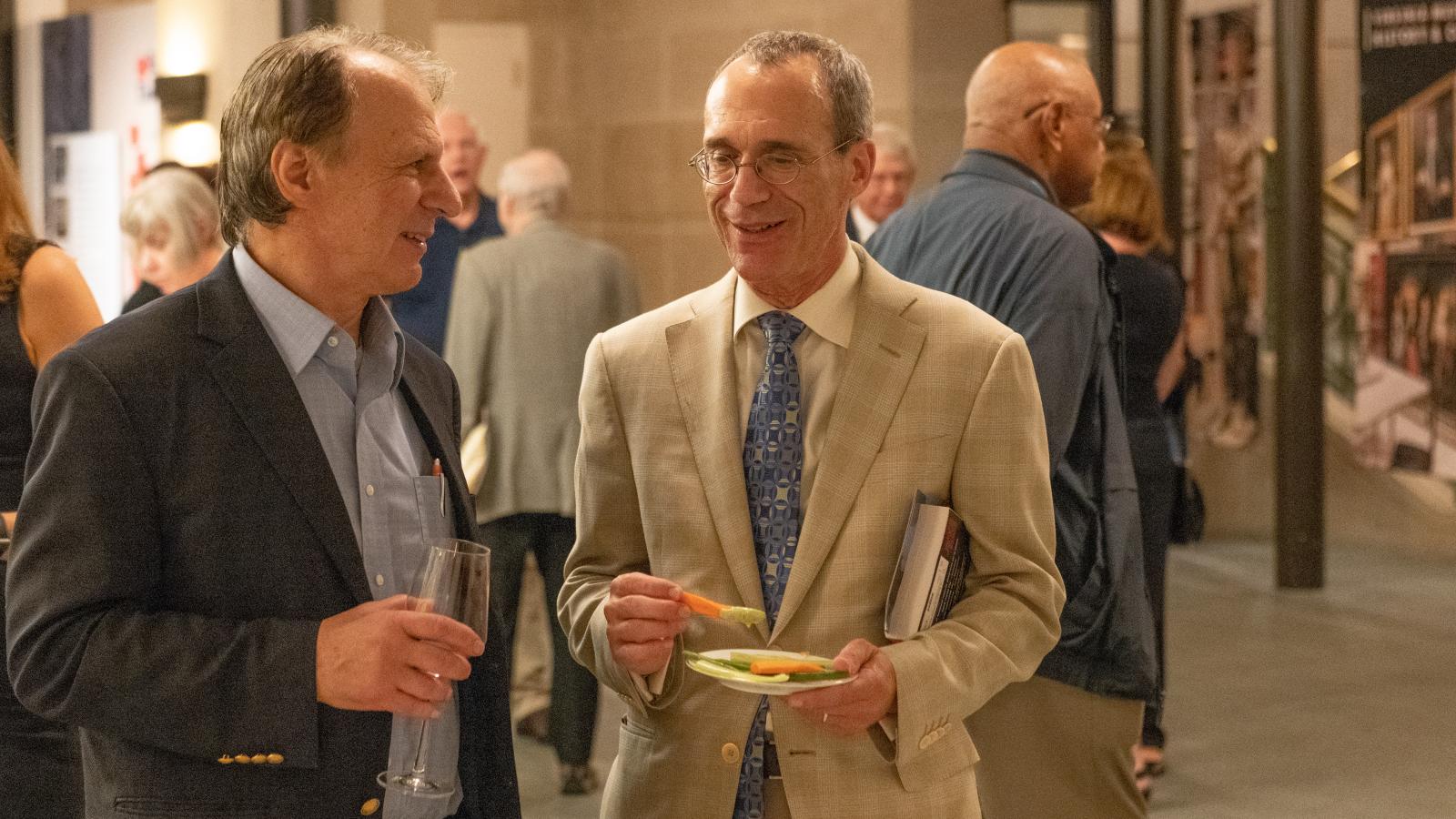
John M. Barry (left), author of “The Great Influenza: The Story of the Deadliest Pandemic in History,” and Michael Donnenberg, M.D., senior associate dean for research and research training, and professor of internal medicine at the VCU School of Medicine, discuss John’s book after the two participated in a panel at the Virginia Museum of History and Culture. Photo: Troy Wilkinson, courtesy of Virginia Museum of History and Culture.
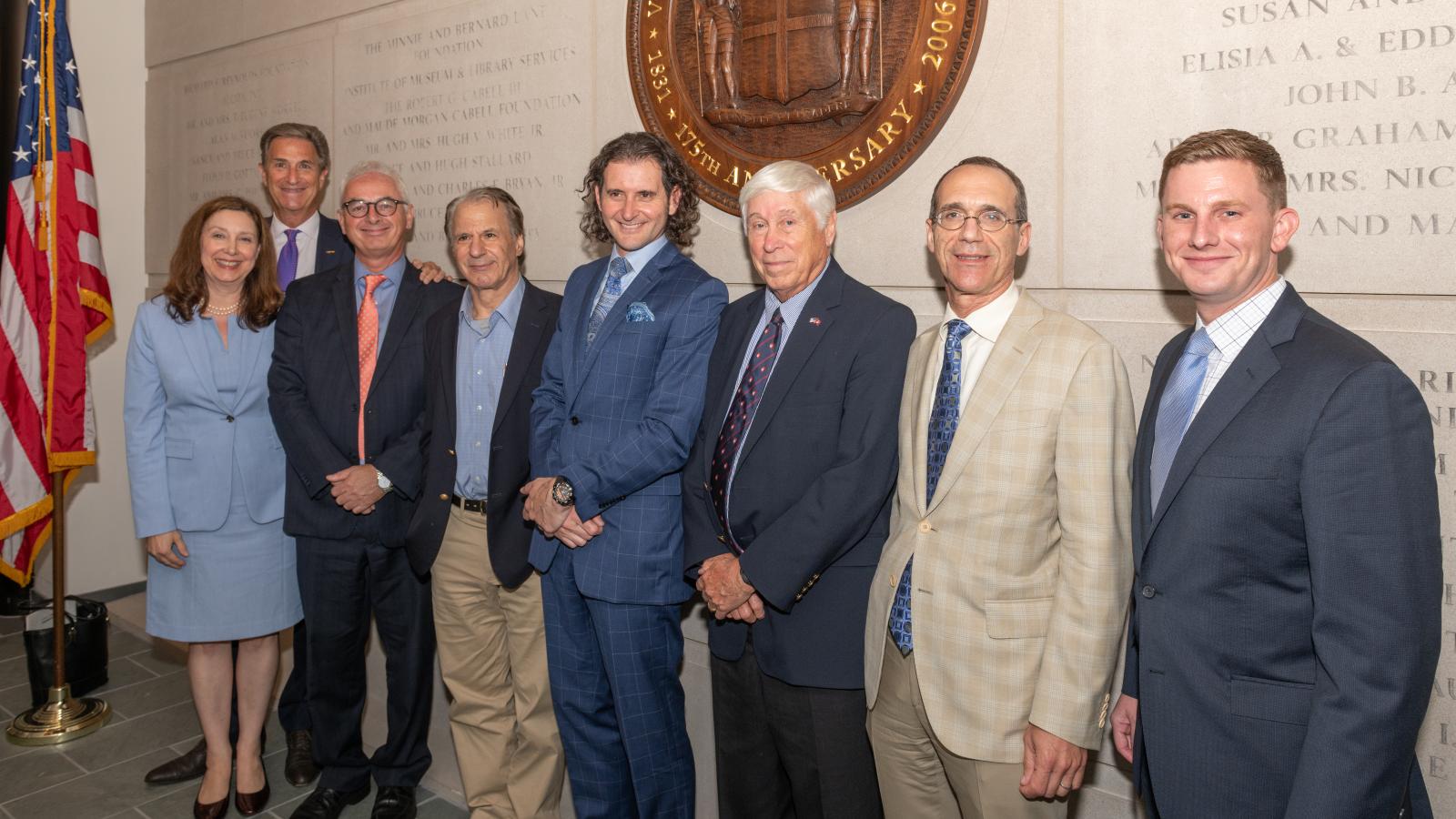
(L to R) Margaret Ann Bollmeier, MCV Foundation president; Harry Thalhimer, MCV Foundation board chair; Peter F. Buckley, VCU School of Medicine dean; John M. Barry, author of “The Great Influenza: The Story of the Deadliest Pandemic in History;” Gonzalo Bearman, M.D., VCU School of Medicine chair of the Division of Infectious Diseases and hospital epidemiologist; Austin Brockenbrough III, Virginia Museum of History and Culture board member and MCV Foundation lifetime honorary trustee; Michael Donnenberg, M.D., VCU School of Medicine senior associate dean for research and research training, and professor of internal medicine; and Jamie Bosket Virginia Museum of History and Culture president and CEO. Photo: Troy Wilkinson, courtesy of Virginia Museum of History and Culture.
History and Health: Exploring the 1918 Flu Pandemic and How VCU Health is Prepared to Fight Modern Outbreaks
This month, 100 years after one of the deadliest pandemics in history, we partnered with the Virginia Museum of History and Culture to explore the human impact of 1918’s influenza virus and what resources VCU Health has in place today to protect Central Virginians in the case of modern outbreaks.
More than 400 people attended the event on Sept. 20 to hear from John M. Barry, author of “The Great Influenza: The Story of the Deadliest Pandemic in History,” and a panel of VCU Health infectious disease experts.
John explained the staggering impact of the pandemic, which began at the height of WWI and killed as many as 100 million people worldwide.
He said that in the U.S. military, where the best medical care of the time was available, 6.5% of those who contracted the flu died. In addition, the virus hit the working age general population particularly hard. John said 6.2% of all U.S. miners and 3.2% of all U.S. factory workers who were part of a Metropolitan Life Insurance study died.
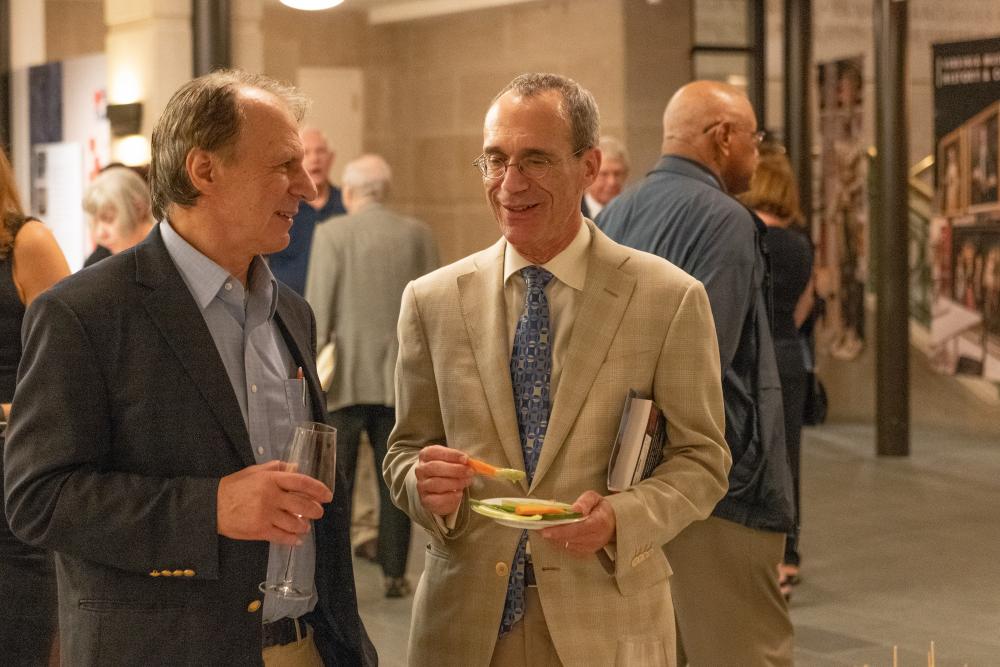
Across the world, populations that had not battled seasonal influenza in the past were devastated. John said 14 percent of the entire Fiji Islands population died in 16 days, and that some tribes in Alaska and Africa reported 100 percent mortality.
John also shared a particularly horrifying observation from Victor Vaughn, M.D., head of the Division of Communicable diseases in the U.S. Army, who said in late autumn of 1918, “If the epidemic continues its mathematical rate of acceleration, civilization could easily disappear from the face of the earth.”
Thankfully, the pandemic did not reach such apocalyptic proportions, but it did turn out to be one of the deadliest in history, and little was known at the time and in the years that followed about its origin and decline.
Work has been underway ever since to prevent something like the 1918 Influenza Pandemic from happening again, but experts say a similarly devastating outbreak is still possible, and preventing such an event was part of the evening’s panel discussion.
The panel, moderated by Peter F. Buckley, M.D., dean of the VCU School of Medicine, included Gonzalo Bearman, M.D., chair of the Division of Infectious Diseases and hospital epidemiologist, and Michael Donnenberg, M.D., senior associate dean for research and research training and professor of internal medicine. They discussed the ways in which VCU Health’s triumvirate mission to provide world-class patient care, research and education plays a significant role in understanding the 1918 flu pandemic and in keeping Central Virginia safe when modern infectious disease outbreaks occur.
- Patient Care
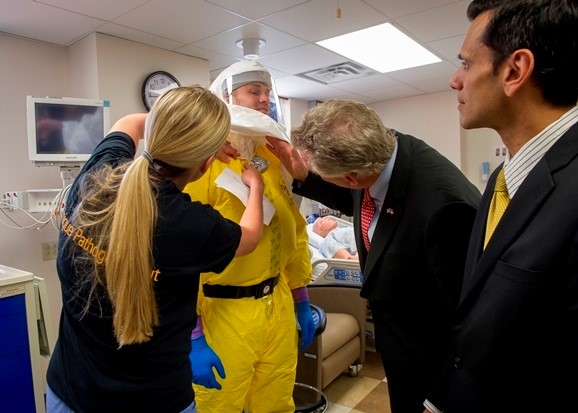
Dr. Bearman highlighted the VCU Medical Center’s Unique Pathogens Unit, which was established in response to the 2015 Ebola outbreak. This 5,130-square-foot unit is a complete self-contained biocontainment facility that includes areas for donning and doffing personal protective equipment, a clinical laboratory, a fully stocked pharmacy, a waste management area with an autoclave, and a control room to monitor patients and team members.
VCU Health worked with state, federal and nonprofit emergency planners to create this self-contained unit, which has been thoroughly vetted and endorsed by the CDC. The medical center now has about 100 highly trained and skilled team members that can be called upon at any time if a unique pathogen presents. All Unique Pathogens Unit team members volunteer to work in that capacity. If a patient presents, the unit can become fully operational within four hours of the initial call.
- Research

The flu can cause serious complications in the lungs, including pneumonia and inflammation. Dr. Donnenberg discussed current research at VCU Health that has shown very positive results in administering extremely high doses of Vitamin C intravenously to reduce inflammation and reverse acute lung injury.
Read more about this research in NEXT magazine, where the lead researcher, Alpha A. “Berry” Fowler III, M.D., told us that the results of one of his early studies using this novel technique showed sepsis mortality rate decrease from 62 percent to 35 percent.
- Education
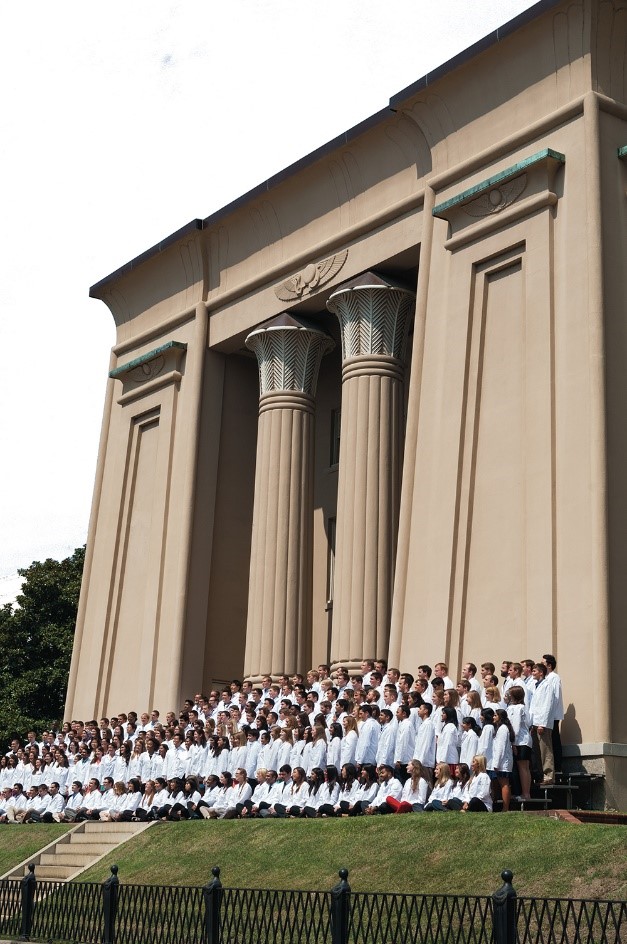
In his remarks, Dr. Buckley mentioned a two-time VCU School of Medicine alumnus who has played a huge role in studying the 1918 flu pandemic. Jeffery K. Taubenberger, who earned his M.D. in 1986 and his Ph.D. in 1987 from the school, was the first to sequence the genome of the influenza virus that caused the 1918 pandemic.
This landmark achievement cleared a path to better understanding past pandemics and combatting those we will face in the future. Dr. Taubenberger is chief of the Viral Pathogenesis and Evolution Section, Laboratory of Infectious Diseases at the National Institute of Allergy and Infectious Diseases, National Institutes of Health.
Of course, the school’s involvement in battling the 1918 pandemic began long before Dr. Taubenberger’s contributions. More than 40 faculty members of the Medical College of Virginia, the forerunner to the VCU School of Medicine, were serving in the military in the fall of 1918, including the dean, Stuart McGuire, M.D. As this military service created a shortage of healthcare providers to treat patients, third- and fourth-year MCV students were given permission to serve as assistants to physicians in Richmond and across Virginia.
Faculty member Lawrence Price, M.D., with financial support from the city council and local Red Cross, led efforts to establish the John Marshall Emergency Hospital where many of the remaining medical students who were in their first and second years served as orderlies. Dr. Price obtained cots from the YMCA, Army and Navy Club, and local hotels to reach a bed capacity of 1,000.
Our September 20 event was the second of three events we have planned in our partnership with the Virginia Museum of History and Culture that invite participants to explore the intersection of health and history in our community and country. The first event focused on heart transplant, and the next event — set to be scheduled soon — will focus on cancer.
A key person in bringing this partnership to fruition was Austin Brockenbrough III, who is a member of the Virginia Museum of History and Culture Board of Trustees and one of our lifetime honorary trustees. He played a crucial role in establishing our partnership and made many of the connections that were necessary to see it through to reality.
Charles F. Bryan Jr., Ph.D., is another link between our foundation and the Virginia Museum of History and Culture. He is president and CEO emeritus of the Virginia Historical Society and a member of our board of trustees.
The Virginia Sargeant Reynolds Foundation has also played an important role in the partnership by providing grants to support the discussions and receptions at both events so far.
As these events continue to invite the public into our exploration of history and health, we’re highlighting the important role VCU Health plays in keeping us all safe and healthy. If you’re interested in being a part of this mission to protect our community and future generations through patient care, research and education, please visit our giving page to learn about all the tools available to make gifts across the MCV Campus.
